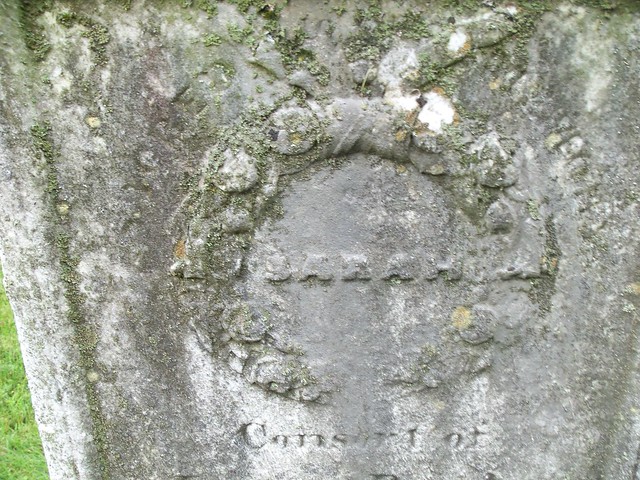
The epitaph on this stone, “We shall sleep, but not forever” is the title and first line of a Christian hymn that appeared in print in the late 19th century. The lyrics were written by Mary Kidder and the music by S. George Sibley. The full lyrics are below:
We shall sleep, but not forever,
There will be a glorious dawn!
We shall meet to part, no, never,
On the resurrection morn!
From the deepest cave of ocean,
From the desert and the plain,
From the valley and the mountain,
Countless throngs shall rise again.
Refrain
We shall sleep, but not forever,
There will be a glorious dawn!
We shall meet, to part, no, never,
On the resurrection morn!
When we see a precious blossom,
That we tended with such care,
Rudely taken from our bosom,
How our aching hearts despair!
Round its little grave we linger,
Till the setting sun is low,
Feeling all our hopes have perished,
With the flower we cherished so.
Refrain
We shall sleep, but not forever,
In the lone and silent grave:
Blessèd be the Lord that taketh,
Blessèd be the Lord that gave.
In the bright eternal city,
Death can never, never come!
In His own good time He’ll call us,
From our rest, to home, sweet home.
Refrain
41.565606
-81.537900
Read Full Post »
 //embedr.flickr.com/assets/client-code.js
//embedr.flickr.com/assets/client-code.js //embedr.flickr.com/assets/client-code.js
//embedr.flickr.com/assets/client-code.js















